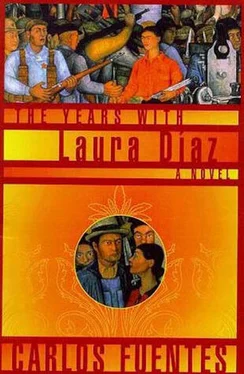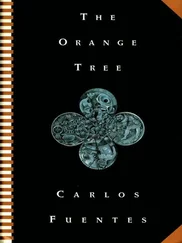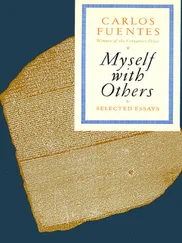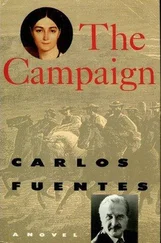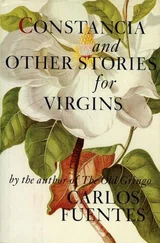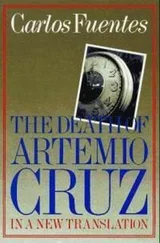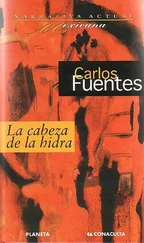The artist of Mexico City’s grief but also its joy, Laura and a newborn boy dressed by his mother’s eyes as if he were the baby Jesus himself, Jesus reborn; Laura and a man with a scarred face and restrained violence piously kissing the image of the Virgin of Guadalupe; Laura on the little pleasures and tragic premonitions of a debutante ball, a wedding, a baptism; Laura’s camera, depicting the instant, managed to depict the future of the instant: that was the strength of her art, an instantaneity with descendants, a plastic eye that restored tenderness and respect to vulgarity, and amorous vulnerability to the harshest violence. It wasn’t only the critics who said it: her admirers felt it, Laura Díaz, almost sixty years of age, is a great Mexican photographer, the best after Alvarez Bravo, high priestess of the invisible, she was called, the poet writing with light, the woman who learned to photograph what Posada could engrave.
When she achieved independence and fame, Laura Díaz kept the photo of the dead Frida for herself, that one she would never give out for publication, that photo was part of her rich, rich memory, the emotional archive of a life that had suddenly, in maturity, flourished like a plant that flowers late but perennially. The photograph of Frida was testimony to all the photographs Laura hadn’t taken in the years she’d lived with others; it was a talisman. Alongside Diego and Frida, without noticing it, as if in a dream, she had gained the artistic sensibility that flourished much later on, when many of the years with Laura Díaz had gone by.
She didn’t complain about that time or condemn it as a calendar of subjection to the world of men, how could she if in her pages lived the two Santiagos, her lovers Jorge Maura, Orlando Ximénez, and Harry Jaffe, her parents, her aunts, the jolly black sweeper Zampayita, and her poor but sympathetic, and (to her) compassionate, husband Juan Francisco? How could she forget them, but how could she not feel sorry that she had not photographed them. She imagined her own eye as a camera able to capture everything it saw and felt over the six decades of her life, and felt a chill of horror. Art was selection. Art meant losing almost everything in exchange for the salvation of very little.
It was impossible to have art and life at the same time, and in the end Laura Díaz was thankful that life had preceded art — for art, premature or even prodigal, might have killed life.
It was when she discovered something that should have been obvious, when she recovered her son Santiago’s paintings and drawings from the rubble of the family house on Avenida Sonora and brought them to her new apartment on Plaza Rio de Janeiro, when in among the mass of pencil and pastel drawings, sketches, and two dozen oil paintings, she discovered the canvas with the naked man and woman staring at each other without touching, desiring only each other but satisfied with the desire.
In her haste to abandon the fallen family home, to set herself up in her new apartment on Plaza Rio de Janeiro, to start her new, independent life, and go out to photograph Mexico City and the lives in it, following, she said to herself, the inspiration of Diego Rivera and Frida Kahlo, Laura had not stopped to take a close look at her own son’s paintings. Perhaps she felt so much love for Santiago the Younger that she preferred to distance herself from the physical proof of her son’s existence in order to keep him alive, if only in his mother’s soul. Perhaps she had to discover her own vocation to rediscover her son’s. Busy arranging her own photos, she went on to arrange Santiago’s paintings and drawings, and among the two dozen oils, this one, the naked couple staring at each other without touching, held her attention.
At first she was critical of the piece. The angular, prominent, twisted, and cruel outline of the figures derived from Santiago’s admiration for Egon Schiele and from his long study of the Viennese albums that had miraculously turned up at the German Bookstore in Colonia Hipódromo. The difference, Laura quickly noticed when she compared the books with the painting, was that Schiele’s figures were almost always unique, solitary, or, rarely, intertwined diabolically and innocently in a frozen physical union that was merely physiological and always — whether together or apart — airless, having no reference to any landscape, or room, or other space, as if in an ironic return by the most modern artist to the most ancient art, Schiele the blase Expressionist returned to Byzantine painting, where the figure of God the Pancreator is fixed before the creation of anything in the absolute void of solitary majesty.
This painting by the young Santiago took from Schiele’s tortured figures, no doubt of it, but also gave back to them, as in a renaissance of the Renaissance, the way that Giotto and Masaccio gave air, landscape, and location to the ancient iconography of Byzantium. The naked man in Santiago’s canvas — emaciated, pierced by invisible thorns, young, beardless, but with the face of an unconquerable malady, a corrosive sickness running through his unwounded body that was conquered from within for having been created without being consulted first — fixed his gaze on the belly of the naked woman, pregnant, blond (Laura quickly checked for resemblances in the books Santiago had collected), just like the Eves by Holbein and Cranach, resigned to passive conquest of the man with one less rib, even though this time they were deformed by desire. The earlier Eves were impassive, fatal, but this, the new Eve of Santiago the Younger, participated in the anguish of the convulsed, young, condemned Adam who stared intensely at her belly while she, Eve, stared intensely into his eyes, and neither — only now did Laura notice this obvious detail — had their feet on the ground.
They didn’t levitate. They ascended. Laura felt a deep emotion when she understood her son Santiago’s painting. This Adam and Eve did not fall. They ascended. At their feet, the skin of the apple and the skin of the serpent fused in a single mass. Adam and Eve left the garden of delights, but they did not fall into the inferno of pain and toil. Their sin was of another kind. They ascended. They rebelled against the divine decree — thou shall not eat this fruit — and instead of falling, they rose. Thanks to sex, rebellion, and love, Adam and Eve were the protagonists of the Ascent of Humanity, not its Fall. The evil of the world was believing that the first man and the first woman fell and condemned us to a heritage of vice. For Santiago the Younger, on the other hand, Adam and Eve’s guilt was not hereditary, wasn’t even guilt, and the drama of the Earthly Paradise was a triumph of human freedom over God’s tyranny. It wasn’t drama. It was history.
In the deepest part of the landscape in her son’s painting, Laura saw painted, very small, like Brueghel’s Icarus, a barque with black sails leaving the coasts of Eden behind with a single passenger, a tiny figure divided in a singular way: half of his face was angelic, the other half diabolical; one half blond, the other half red; but the body itself, wrapped in a cape as long as the sails, was shared by angel and demon, and both, Laura guessed, were God, with a cross in one hand and a pitchfork in the other: two instruments of torture and death. The lovers ascended. The one who fell was God, and the fall of God was what Santiago had painted: a departure, a distance, shock on the face of the Creator, who abandons Eden perplexed because His creatures have rebelled, because they have decided to ascend instead of fall, because they have mocked the perverse divine plan to create the world only in order to condemn it to sin, transmitted from generation to generation, so that men and women for all time will feel inferior to God, dependent on God, condemned by Him, and absolved — before falling again — only by God’s capricious grace.
Читать дальше
